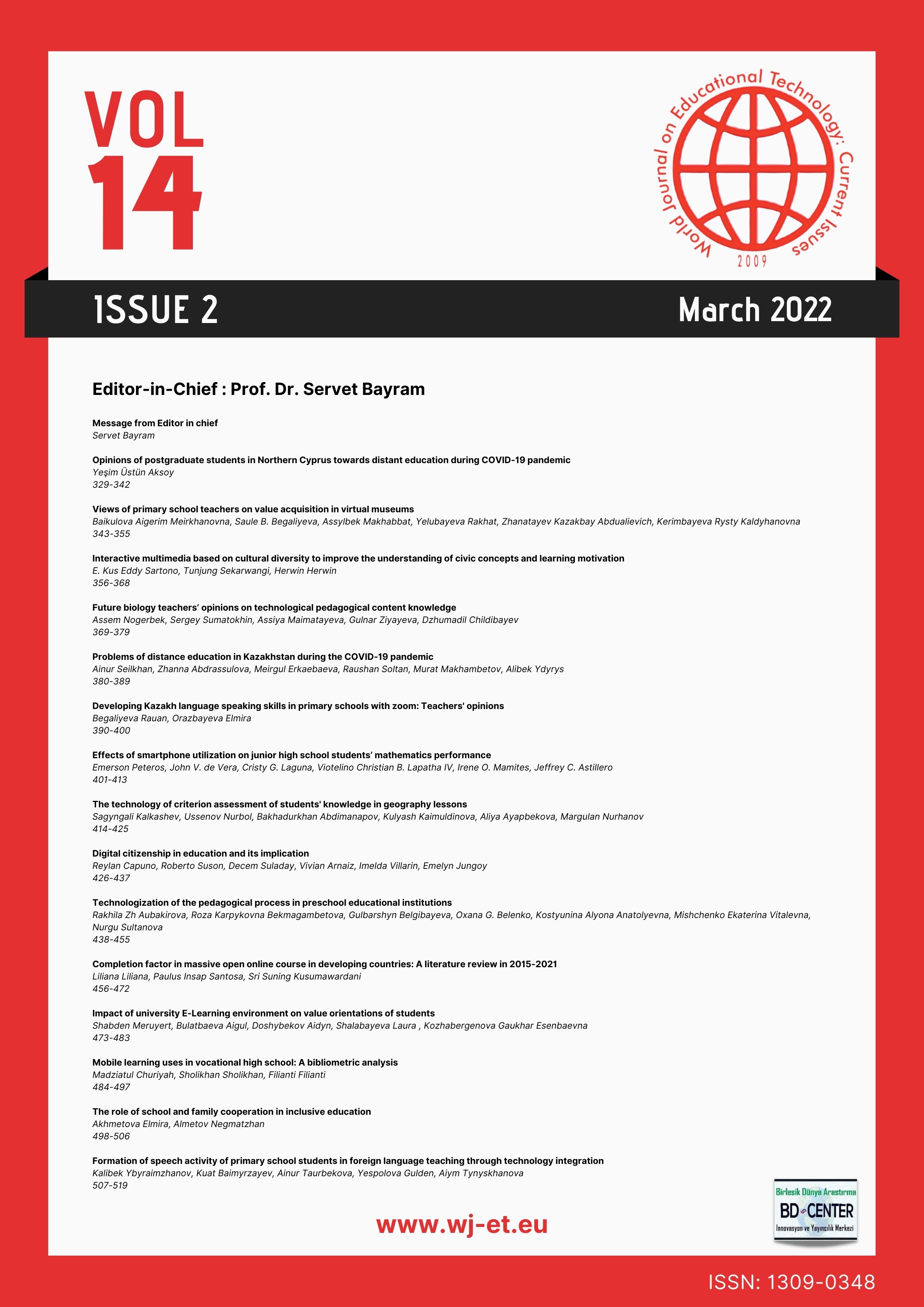Problems of distance education in Kazakhstan during the COVID-19 pandemic
Main Article Content
Abstract
Due to the spread of COVID-19, which has become a global pandemic, Kazakhstan began distance education in universities in mid-March. During the quarantine, there were several problems with distance education. The purpose of this article is to research the effect of the COVID-19 pandemic on the Kazakhstani educational process. The methodological basis of the study describes the general situation of science in distance education in Kazakhstan by the strengths, weaknesses, opportunities, and threats analysis. In addition, this article determines the current state of Kazakhstan’s distance education system. At the end of the article, there are recommendations for solving major problems that have accumulated today. At the same time, this distance education process provides great opportunities for Kazakhstan, mainly the opportunity to develop the domestic information and communication technologies based on state information security. It is also an opportunity to lead people to protect themselves from COVID-19 safely in such a difficult global situation.
Keywords: distance education, Kazakhstan education system, information and communication technology (ICT), SWOT analysis, COVID-19.
Downloads
Article Details

This work is licensed under a Creative Commons Attribution 4.0 International License.
World Journal on Educational Technology: Current Issues is an Open Access Journal. The copyright holder is the author/s. Licensee Birlesik Dunya Yenilik Arastirma ve Yayincilik Merkezi, North Nicosia, Cyprus. All articles can be downloaded free of charge. Articles published in the Journal are Open-Access articles distributed under CC-BY license [Attribution 4.0 International (CC BY 4.0)].
Birlesik Dunya Yenilik Arastirma ve Yayincilik Merkezi (BD-Center)is a gold open-access publisher. At the point of publication, all articles from our portfolio of journals are immediately and permanently accessible online free of charge. BD-Center articles are published under the CC-BY license [Attribution 4.0 International (CC BY 4.0)], which permits unrestricted use, distribution, and reproduction in any medium, provided the original authors and the source are credited.
